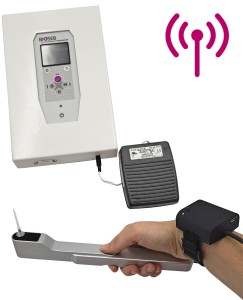Authors
Y Fan, Y Xiao, WA Sabuhi, CP Leape, D Gil, S Grindy
Lab
Department of Orthopaedic Surgery, Harvard Medical School, Boston, Massachusetts
Journal
Journal of Orthopaedic Research
Abstract
The majority of periprosthetic joint infections occur shortly after primary joint replacement (<3 months) and require the removal of all implant components for the treatment period (~4 months). A clinically relevant animal model of periprosthetic infection should, therefore, establish an infection with implant components in place. Here, we describe a joint replacement model in the rat with ultrahigh molecular weight polyethylene (UHMWPE) and titanium components inoculated at the time of surgery by methicillin_sensitive Staphylococcus aureus (S. aureus), which is one of the main causative microorganisms of periprosthetic joint infections. We monitored the animals for 4 weeks by measuring gait, weight_bearing symmetry, von Frey testing, and micro_CT as our primary endpoint analyses. We also assessed the infection ex vivo using colony counts on the implant surfaces and histology of the surrounding tissues. The results confirmed the presence of a local infection for 4 weeks with osteolysis, loosening of the implants, and clinical infection indicators such as redness, swelling, and increased temperature. The utility of specific gait analysis parameters, especially temporal symmetry, hindlimb duty factor imbalance, and phase dispersion was identified in this model for assessing the longitudinal progression of the infection, and these metrics correlated with weight_bearing asymmetry. We propose to use this model to study the efficacy of using different local delivery regimens of antimicrobials on addressing periprosthetic joint infections. Statement of clinical significance: We have established a preclinical joint surgery model, in which postoperative recovery can be monitored over a multi_week course by assessing gait, weight_bearing, and allodynia. This model can be used to study the efficacy of different combinations of implant materials and medication regimens.
BIOSEB Instruments Used
Electronic Von Frey 4 (BIO-EVF4)
Source :

 Douleur - Allodynie/Hyperalgésie Thermique
Douleur - Allodynie/Hyperalgésie Thermique Douleur - Spontanée - Déficit de Posture
Douleur - Spontanée - Déficit de Posture Douleur - Allodynie/Hyperalgésie Mécanique
Douleur - Allodynie/Hyperalgésie Mécanique Apprentissage/Mémoire - Attention - Addiction
Apprentissage/Mémoire - Attention - Addiction Physiologie & Recherche Respiratoire
Physiologie & Recherche Respiratoire




































 Douleur
Douleur Système Nerveux Central (SNC)
Système Nerveux Central (SNC)  Neurodégénérescence
Neurodégénérescence Système sensoriel
Système sensoriel Système moteur
Système moteur Troubles de l'humeur
Troubles de l'humeur Autres pathologies
Autres pathologies Système musculaire
Système musculaire Articulations
Articulations Métabolisme
Métabolisme Thématiques transversales
Thématiques transversales Congrès & Meetings
Congrès & Meetings 